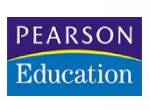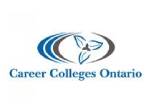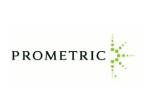Post Graduate Certificate in Basic Pharmacology and Medication Management
( PGCBPMM )
❖ Adverse Effects/Contraindications/Side Effects/Interactions
Learning Objectives:
At the end of this course, the learner will be able to:
1. Identify contraindications to the administration of a medication to the client
2. Identify actual and potential incompatibilities of prescribed client medications
3. Identify symptoms/evidence of an allergic reaction to medications
4. Assess the client for actual or potential side effects and adverse effects of medications (e.g., prescribed, over-the-counter, herbal supplements, preexisting condition)
5. Provide information to the client on common side effects/adverse effects/potential interactions of medications and inform the client when to notify the primary health care provider
6. Notify the primary health care provider of side effects, adverse effects, and contraindications of medications and parenteral therapy
7. Document side effects and adverse effects of medications and parenteral therapy
8. Monitor for anticipated interactions among the client's prescribed medications and fluids (e.g., oral, topical, subcutaneous, IM, IV)
9. Evaluate and document the client's response to actions taken to counteract side effects and adverse effects of medications and parenteral therapy
❖ Pharmacological Pain Management
Learning Objectives
At the end of this course, the learner will be able to:
1. Assess client need for administration of a PRN pain medication (e.g., oral, topical, subcutaneous, IM, IV)
2. Administer and document pharmacological pain management appropriate for client age and diagnoses (e.g., pregnancy, children, older adults)
3. Administer medications for pain management
4. Handle and administer controlled substances within regulatory guidelines
5. Evaluate and document the client's use and response to pain medications
❖ Parenteral Intravenous therapies
Learning Objectives
At the end of this course, the learner will be able to:
1. Identify appropriate veinous access for various therapies
2. Educate clients on the need for intermittent parenteral fluid therapy
3. Apply knowledge and concepts of nursing procedures/psychomotor skills when caring for a client receiving intravenous and parenteral therapy
4. Prepare the client for intravenous catheter insertion
5. Monitor the use of an infusion pump (e.g., IV, patient-controlled analgesia device)
6. Monitor intravenous infusion and maintain the site
7. Evaluate the client's response to intermittent parenteral fluid therapy
❖ Medication administration
Learning Objectives
At the end of this course, the learner will be able to:
1. Educate the client about medications
2. Educate client on medication self-administration procedures
3. Prepare and administer medications using rights of medication administration
4. Review pertinent data before medication administration (e.g., contraindications, lab results, allergies, potential interactions)
5. Mix medications from two vials when necessary
6. Administer and document medications given by common routes (e.g., oral, topical)
7. Administer and document medications given by parenteral routes (e.g., intravenous, intramuscular, subcutaneous)
8. Participate in the medication reconciliation process
9. Titrate the dosage of medication based on assessment and ordered parameters
10. Dispose of unused medications according to facility/agency policy
11. Handle and maintain medication in a safe and controlled environment
12. Evaluate appropriateness and accuracy of medication order for a client
13. Handle and administer high-risk medications
❖ Dosage Calculation
Learning Objectives:
At the end of this course, the learner will be able to:
1. Perform calculations needed for medication administration
2. Use clinical decision making/critical thinking when calculating dosages
3. Apply knowledge and concepts of mathematics when caring for a client receiving intravenous and parenteral therapy
❖ Expected Actions/Outcomes
Learning Objectives
At the end of this course, the learner will be able to:
1. Obtain information on a client's prescribed medications (e.g., review formulary, consult pharmacist)
2. Use clinical decision making/critical thinking when addressing expected effects/outcomes of medications (e.g., oral, intradermal, subcutaneous, IM, topical)
3. Evaluate the client's use of medications over time (e.g., prescription, over-the counter, home remedies)
4. Evaluate client response to medication
❖Non-Pharmacological Comfort Interventions
Learning Objectives
At the end of this course, the learner will be able to:
1. Assess the client's need for alternative and complementary therapy
2. Assess the client's need for palliative care/symptom management or non-curative treatments
3. Assess client for pain and intervene as appropriate
4. Recognize differences in client perception and response to pain
5. Apply knowledge of pathophysiology to non-pharmacological comfort/palliative care interventions
6. Incorporate alternative/complementary therapies into client plan of care (e.g., music therapy, relaxation therapy)
7. Recognize complementary therapies and identify potential contraindications (e.g., aromatherapy, acupressure, supplements)
8. Counsel client regarding palliative/symptom management, non-curative treatments, or care
9. Respect client palliative care/symptom management or non-curative treatment choices
10. Assist client in receiving appropriate end-of-life physical symptom management
11. Plan measures to provide comfort interventions to clients with anticipated or actual impaired comfort
12. Provide non-pharmacological comfort measures
13. Evaluate the client's response to non-pharmacological interventions (e.g., pain rating scale, verbal reports)
14. Evaluate the outcomes of alternative and complementary therapy practices
15. Evaluate the outcome of palliative care/symptom management or non-curative treatments
AFFILIATED PARTNERS





